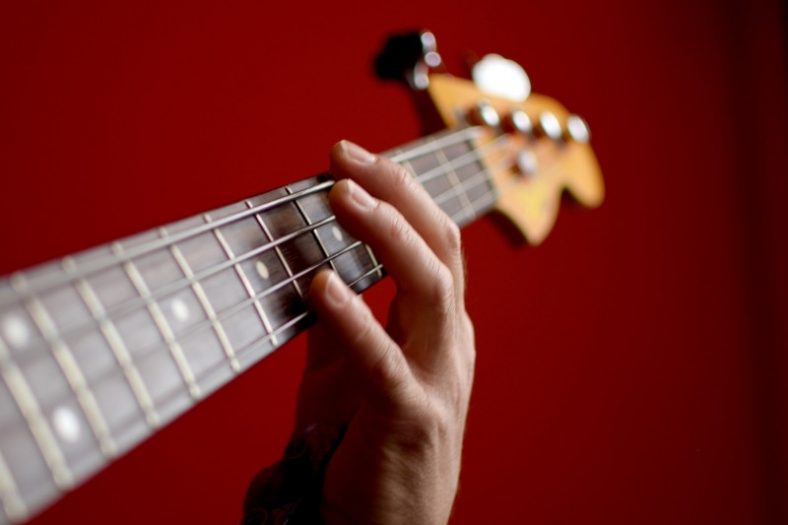How to Read Bass Tabs (Easy Guide)

Bass tabs or tablatures might be overwhelming at first, but they’re intended to make reading music easier. Once you understand this feature, it will open up new horizons for you.
There is a reason why these tabs or tablatures have been around for decades now. It’s proven to be a surefire system when it comes to learning music notation. It is meant to simplify how you read music, not make it harder.
The concept of reading musical notation can be scary for all beginners. But it can actually be learned in quite a short time-frame, once you understand how it works, you’ll start to understand everything that you’re reading.
Tabs And Their Purpose
Tabs are designed to give the one who’s reading them an idea of how the music actually looks, so by viewing the tablature and reading it after you’ve successfully learned how to read music notation, you can even start to visualize what the song will sound like.
Tabs can be found almost everywhere on the internet, for the purpose of better learning a certain song. You can also find tabs in music books. There is a reason why they are used in every section of music learning. To give the knowledge to the viewer and the blueprint to learn a song.
Most bass tabs that you find will be written for four-string bass. However, you may stumble upon tabs for five-string or six-string basses as well, though not so much. The one we’ll be going over today is a normal four-string bass, with the standard bass tuning E, A, D, G.
The Strings
In general music notation, actual notes are used to describe what the music should sound like. Tabs are more of an easy way of learning how to read and how to play because instead of music notes, you have numbers placed on the strings. The first thing you should know is what the string placement is on a basic bass tab.
G ——————|—————–
D ——————|—————–
A ——————|—————–
E ——————|—————–
With most bass guitars having 20 to 24 frets, the numbers you will see on bass tabs will indicate which fret should be played and on which string. As for what order should be played, you should know that you read tabs from left-to-right and follow the notes that are written down all the way to this marking ( | ), which indicates the count.
Let’s see what that would look like, for example:
G ——————–|—————–
D —————-5–|—————–
A ——2—-5——-|—————–
E –3—————-|—————–
1 + 2 + 3 + 4
The Frets
After you know the string placement, the next important thing is the fret numbers. Keep in mind that you read from left to right, as you will see numbers placed on each string. The numbers indicate what fret you should hold down, for example, in the previous tab – You first play the 3rd fret on the E string, then the 2nd fret on the A string, followed by the 5th fret on the A string, finishing with the 5th fret on the D string. This is all in a standard 8 count, with the example giving us half of the phrase.
The Measure Lines
The next step is keeping an eye on the measure lines. As I said previously, most of the bass tabs will be standard eight-count. You may see numbers of frets that are farther apart or less, which should indicate that the time between frets is longer or shorter, but you still have to keep in mind that the measuring line indicates a four-count. So, you have to play the notes in that time frame, only the timing between notes is slower or faster.
Example:
G ———————-|—————-
D —————–5—|—————–
A ——–3–5——–|—————–
E -5——————-|—————–
In this example, if you compare it to the one above, you will see that the timing between notes is different. The first note is the 5th fret on the E string, followed by more time until you play the 3rd fret on the A string and then a faster transition to the 5th fret on the A string, finishing with a standard time between notes on the 5th fret of the D string. Keep in mind that this is still a standard count from 1-4, which means it’s the same time frame but the transitions are slightly different.
Markings
There are a few different markings that you may stumble upon while reading a bass tab. Think of them as indicators that show you how a note should be played. The most common bass markings that you will find are:
Markings on the strings:
- ( / ) – Forward slash – indicates a slide moving up in pitch.
- ( \ ) – Back slash – indicates a slide moving down in pitch.
- ( ^ ) – Caret – indicates a bend on a string.
- ( h ) – An h – indicates a hammer-on.
- ( x ) – An x – indicates a ghost note.
- ( p ) – A p – indicates a pull-off.
Marking below the strings:
- T – means to tap.
- P – means to pop.
- S – means to slap.
Summary
While it can be a scary concept, bass tabs are meant for easier music learning. Most of these tabs are written for four-string bass guitars, with the standard tune E, A, D G. Bass tabs require reading fret numbers on certain strings, most commonly in an eight-count, and require reading from left to right. You should keep in mind the measure lines, as well as the markings on the bass tab. I hope this clears up a lot of stuff and helps you learn how to read bass tabs in the future.





